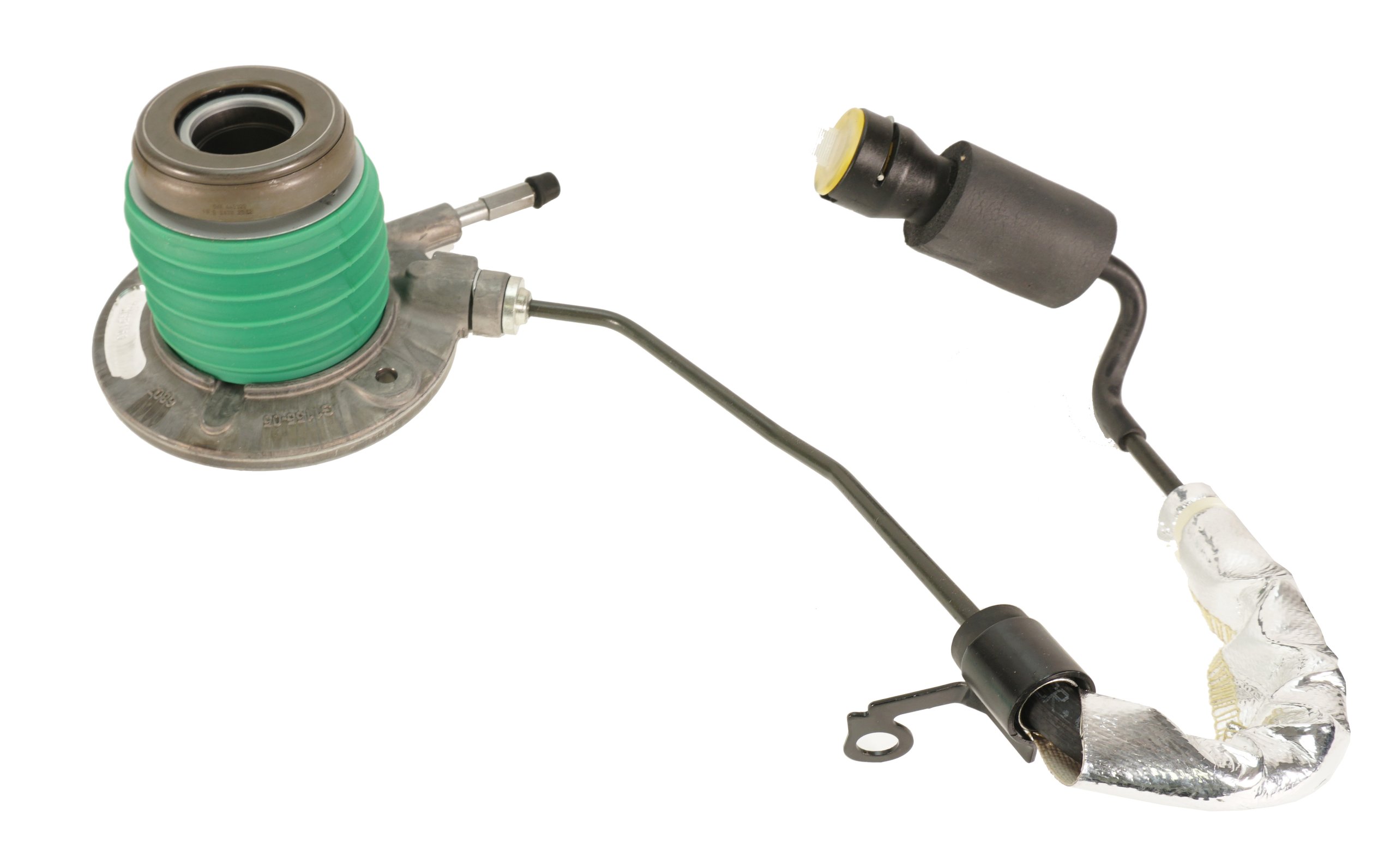Part 1 – Factory Hydraulics
It used to be pretty easy to do a clutch change with mechanical release mechanisms.
Simply grind the flywheel, install the new clutch, then re-adjust your linkage to position the release bearing for proper release and pedal position, and you are back on the road. Unfortunately, it is not as easy with today’s factory slave/internal hydraulic release mechanisms.
Ford was the first to use an internal hydraulic release bearing or slave in their pickup trucks during the late 1980s. These early models were limited in travel, very finicky to bleed, and often failed. The designs have improved over the years, and almost any new manual transmission vehicle sold will have this type of system. Beyond this, installers did not completely understand how they worked and often got in trouble when installing non-stock clutch components.
Internal slave bearings start in a ‘sprung outward’ position and work on the principle of preload. The bearing has a set travel length, and as the transmission is installed, the bearing is compressed or preloaded a certain amount to provide the forward movement needed to disengage the clutch. The trick is to have enough preload to achieve adequate bearing movement to disengage the clutch yet still leave some room for wear in the clutch system.
For example, let’s assume a slave bearing with a total potential travel of 1 inch. We ideally want this bearing to preload .600-.700” when the transmission is installed. This would leave .600-.700” of travel available for the master cylinder to move the bearing forward and disengage the clutch and still leave .300-.400” of travel for wear of the clutch disc.
As the wear occurs, the fingers of the clutch get taller and decrease the amount of travel available for wear in the slave bearing. When the system is entirely out of this ‘wear room,’ the bearing will bottom out on the fingers and eventually cause the clutch to slip.
Most aftermarket clutches will have a ‘clutch height’ (the distance from the backside of the flywheel flange to the fingers of the clutch, fully assembled) that is different from a factory clutch.
This measurement is so critical when you make a clutch change, regardless of the brand.
We strongly recommend checking the preload on any install, even if you are just replacing a stock clutch with a stock clutch.
We have developed a great video explaining this procedure, along with documentation and a worksheet to help you. Changing a clutch in a later model vehicle is usually no picnic – it is more than worth the extra 15-20 minutes to run these measurements, and make sure when you finish the install, it will be the last time you have to do it!

